
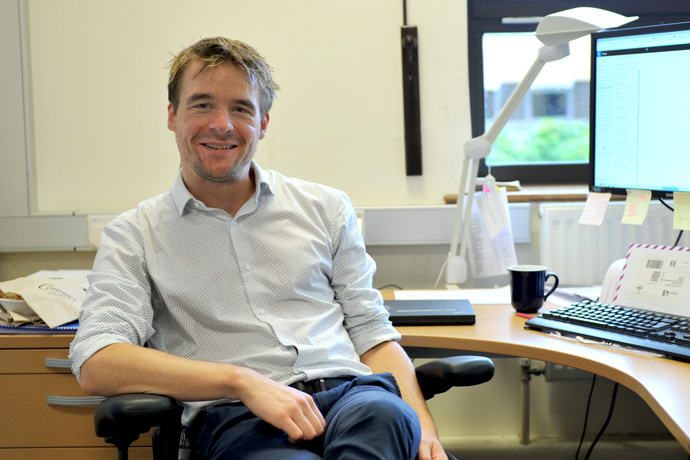
Dinand Schepers joined ECMWF in 2015 to work on coupled, satellite-era data assimilation.
ECMWF’s Annual Seminar on ‘Earth system assimilation’ opened on 10 September.
One of the speakers at the four-day event, ECMWF scientist Dinand Schepers, trained as an aerospace engineer before moving into Earth observations and their assimilation into Earth system models.
“When I considered possible technical degree courses, aerospace engineering looked like the most interesting one to me,” Dinand says.
The course covered Earth observations by means of remote sensing, and Dinand followed up on this with an MSc in satellite gravimetry and a PhD research project on processing greenhouse gas satellite data.
After a stint at the Dutch national meteorological service (KNMI), where he worked on the calibration of the Tropomi instrument to fly on the Sentinel-5P mission, he joined ECMWF.
His first task: to prepare, run and evaluate a coupled, satellite-era research reanalysis of the recent climate.
Producing the CERA-SAT reanalysis was to give ECMWF important clues for its move towards coupled data assimilation in numerical weather prediction.
In coupled data assimilation, data from different components of the Earth system is assimilated into Earth system models in a consistent manner.
“It was a challenging task, but of course I was part of a team,” Dinand remembers. “I was able to pick up quickly from colleagues what I needed to know about data assimilation at ECMWF.”
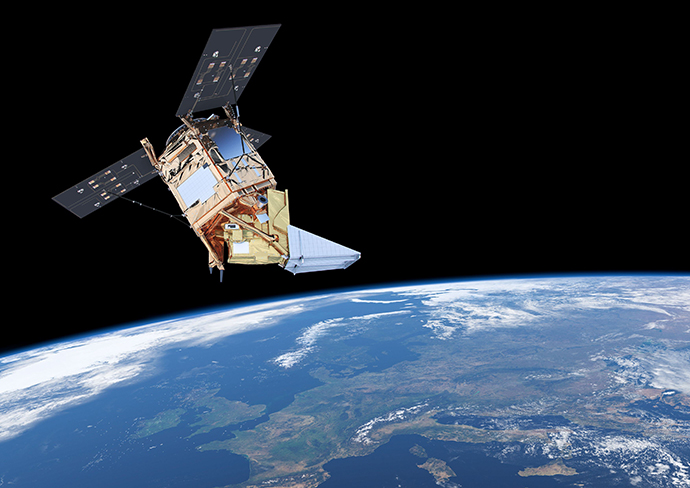
At KNMI, Dinand worked on the ground-based calibration of an imaging spectrometer called Tropomi, carried by the Sentinel-5P satellite. (Image: ESA/ATG medialab)
“A quantum leap”
When Dinand started to work on CERA-SAT, research on coupled data assimilation was already in full swing at ECMWF.
The CERA coupled data assimilation system had been developed, and it was being applied in the CERA-20C reanalysis.
Reanalysis combines Earth observations with models to provide a complete description of the weather and climate of the recent past.
CERA-20C covers the entire 20th century, using many historical data records and assimilating them into a modern Earth system model.
CERA-SAT covers a much shorter period: it reconstructs the state of the atmosphere, the ocean, sea ice, ocean waves and the land surface between 2008 and 2016.
“However, it marks a quantum leap because it includes millions more observations than CERA-20C,” Dinand says.
“CERA-20C was based on a limited observing system continuously available throughout the 20th century, thus excluding satellite observations. CERA-SAT, on the other hand, includes the full range of observations used in today’s numerical weather prediction systems.”
CERA-SAT has also been run at a higher horizontal atmospheric resolution (about 65 km) than CERA-20C (about 125 km), and it uses a more recent version of ECMWF’s Integrated Forecasting System (IFS).
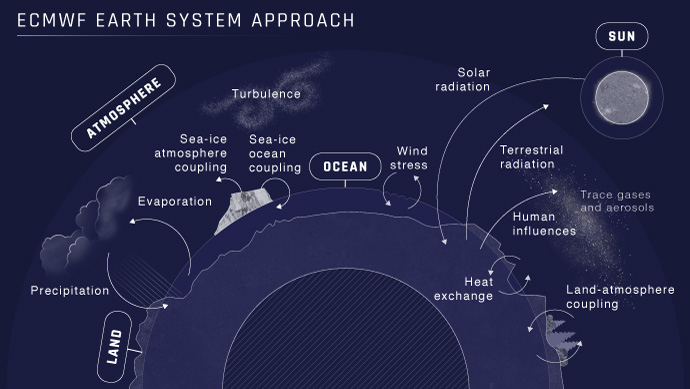
Coupled data assimilation takes into account feedbacks between different Earth system components to achieve a consistent analysis of the Earth system.
Making it work
Dinand had to accomplish a number of tasks to move from CERA-20C to CERA-SAT:
- merge the CERA-20C data assimilation code into a more recent IFS model cycle
- adapt CERA to the modern-day observing system
- verify that CERA works as intended with the full observing system
- produce the reanalysis while monitoring its quality relative to existing, uncoupled reanalyses
- evaluate the reanalysis
He found that CERA-SAT produced sensible results. Its performance lies between that of two existing ECMWF reanalyses of the satellite era: ERA-Interim and the ERA5 reanalysis produced operationally for the Copernicus Climate Change Service (C3S) implemented by ECMWF.
“A preliminary assessment of CERA-SAT shows that coupled data assimilation using the modern-day observing system is absolutely feasible,” Dinand says.
It is no surprise that CERA-SAT is outperformed by ERA5, which is higher-resolution and has a shorter assimilation window for the atmosphere. CERA-SAT also suffers from known shortcomings in the coupled model relating to the representation of some ocean currents in the extratropics.
“Through the coupling introduced by CERA, errors in the representation of those currents propagate into the atmospheric analysis.”
Dinand’s initial evaluation of CERA-SAT will be continued and deepened by other scientists. The results will feed into research into coupled Earth system modelling and the development of coupled data assimilation at ECMWF.
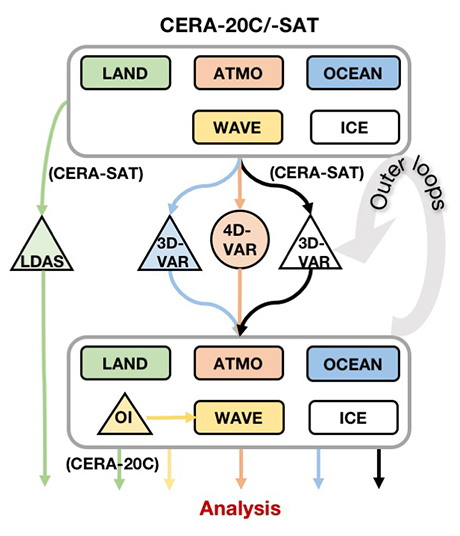
The coupled CERA assimilation system as configured for CERA-20C and CERA-SAT production. Parallel variational data assimilation systems (3D-Var and 4D-Var) combine a short-range coupled forecast with observations to improve the fit between the model state and the observations. The procedure is repeated in ‘outer loops’ until a balanced state between the atmosphere, ocean and sea-ice models is reached and stored as the new analysis. Land data assimilation (LDAS) is performed separately in CERA-SAT, and optimal interpolation (OI) is used for the wave analysis.
A new challenge
Meanwhile Dinand has moved on to work on the ERA5 reanalysis. He has been involved in monitoring its quality as it is being produced.
“One of the things we watch out for is jumps in the reanalysis, which could be a sign of observations from satellite instruments not having been introduced correctly.”
Production of ERA5 from 1979 to today is expected to be complete by the end of this year. The reanalysis will eventually go all the way back to 1950.
Even as ERA5 is still in production, Dinand is helping to prepare the ground for the next-generation operational reanalysis, ERA6.
“Our models improve and so does our observation processing. That’s why it makes sense to produce new reanalyses from time to time, based on the latest science,” Dinand points out.
This also brings new challenges. The latest IFS model cycles are developed with the current observing system in mind. As a result, support for satellite observations made decades ago is not always guaranteed.
“We’ll have to find ways to make this work. The goal is to devise a system that enables reanalysis using historical datasets to be run more easily with any future model cycles.”
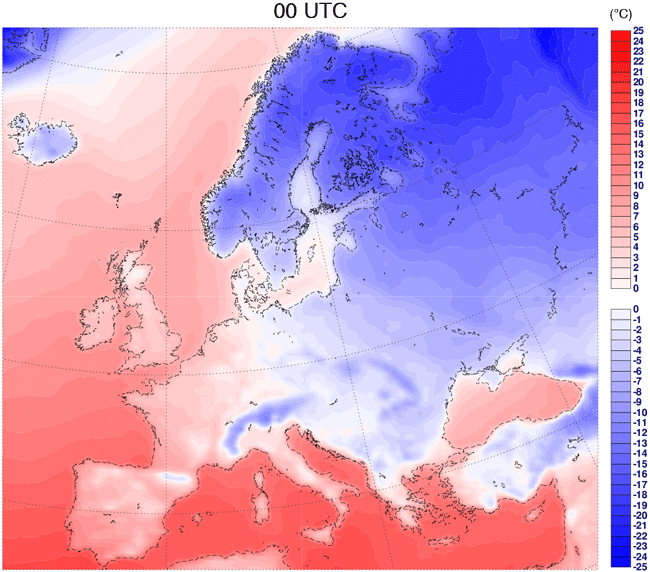
ERA5 has a high temporal as well as spatial resolution. This animation shows the mean surface air temperature in Europe in January 2016 from ERA5 as it varies hour by hour.
